Hydraulic Trolley Jack, also known as a floor jack or bottle jack, is a mechanical device used to lift heavy vehicles or loads in automotive repair shops, garages, and other industrial settings. It provides a convenient and efficient means of raising vehicles or heavy objects for maintenance, repairs, or other purposes.
A hydraulic trolley jack consists of several key components that work together to provide lifting capability:
1. Jack Body: The jack body is the main structure of the trolley jack, usually made of heavy-duty steel or aluminum alloy for strength and durability. It is designed to withstand the weight of the load being lifted and to provide stability during the lifting process.
2. Lifting Arm: The lifting arm, also known as the handle or pump lever, is used to operate the hydraulic mechanism of the jack. It is typically a long handle that is manually pumped up and down to raise and lower the load. The lifting arm is connected to the hydraulic cylinder, which contains the piston and fluid that generate the lifting force.
3. Hydraulic Cylinder: >The hydraulic cylinder is a vital component of the trolley jack that provides the lifting power. It consists of a cylinder and a piston that moves inside the cylinder. When the lifting arm is pumped, it creates pressure in the hydraulic fluid, which then pushes the piston upward, lifting the load. The hydraulic cylinder allows for controlled and gradual lifting, ensuring safety and stability during the operation.
4. Hydraulic Fluid Reservoir: The hydraulic fluid reservoir is a compartment within the trolley jack that holds the hydraulic fluid. It provides the necessary supply of fluid to the hydraulic cylinder for the lifting operation. The reservoir is usually located on the side or the base of the jack body and has a fill plug for adding or changing the hydraulic fluid as needed.
5. Release Valve: The release valve is a mechanism that controls the lowering of the jack and the descent of the load. It is typically a screw or knob located near the handle or pump lever. By turning the release valve counterclockwise, the hydraulic fluid is released, allowing the load to be slowly lowered back down.
6. Swivel Casters: Most hydraulic trolley jacks have swivel casters attached to the base, allowing for easy mobility and positioning. The casters enable the jack to be maneuvered smoothly across the floor, making it convenient to position the jack under the load. Some models may have fixed wheels instead of swivel casters, which provide stability but limit maneuverability.
Hydraulic trolley jacks offer several advantages for lifting heavy loads. They provide a compact and portable solution, making them easy to transport and store. The hydraulic mechanism allows for precise control over the lifting process, enabling users to raise and lower loads smoothly and safely. The design of the trolley jack provides stability and support, ensuring the load remains secure during maintenance or repair work.
These jacks are commonly used in automotive applications for lifting vehicles to access the underside for repairs, tire changes, or inspections. They are also used in industrial settings for lifting heavy equipment, machinery, or other loads.
When using a hydraulic trolley jack, it is important to follow safety guidelines and operate the jack within its rated capacity. This includes positioning the jack on a level and stable surface, placing the load at the recommended lifting points, and using additional support stands to secure the load when working underneath.
In summary, a hydraulic trolley jack is a mechanical lifting device featuring a sturdy jack body, a lifting arm, a hydraulic cylinder, a hydraulic fluid reservoir, a release valve, and swivel casters. It provides a convenient and efficient method for lifting heavy vehicles or loads, making it an essential tool in automotive repair shops and industrial environments.
Penta's Hydraulic Trolley Jack brings forth robust construction with powder coated finish. Burnished cylinder with hard chrome plated piston ensures long life. Casted Wheels with nylon moulding does not damage PU coated floor in service area. Foot operated pedal for free lifting in 5 & 10 Ton for easy operation.
Penta's jack is a horizontal piston that pushes on the short end of a bellcrank, with the long arm providing the vertical motion to a lifting pad, kept horizontal with a horizontal linkage.
Penta's Hydraulic Trolley Jacks include casters and wheels, allowing compensation for the arc taken by the lifting pad. This mechanism provides a low profile when collapsed, for easy maneuvering underneath the vehicle, while allowing considerable extension.
| Model |
Capacity ton |
Minimum Lifting Height mm |
Maximum Lifting mm |
Arm Lifting Height mm |
Handle Lenght mm |
Packing LxBxH mm |
Weight kg |
| Regular | 3 | 135 | 470 | 335 | 1100 | 740x385x185 | 32 |
| Low Profile | 3 | 75 | 480 | 405 | 1100 | 765x380x160 | 32.7 |
Heavy Duty
| Capacity ton |
Minimum Lifting Height mm |
Maximum Lifting mm |
Arm Lifting Height mm |
Handle Lenght mm |
Packing LxBxH mm |
Weight kg |
| 5 | 540 | 190 | 350 | 1050 | 1400x410 | 90 |
| 10 | 540 | 200 | 340 | 1050 | 1650x480 | 115 |
How To Operate Hydraulic Trolley Jack
-
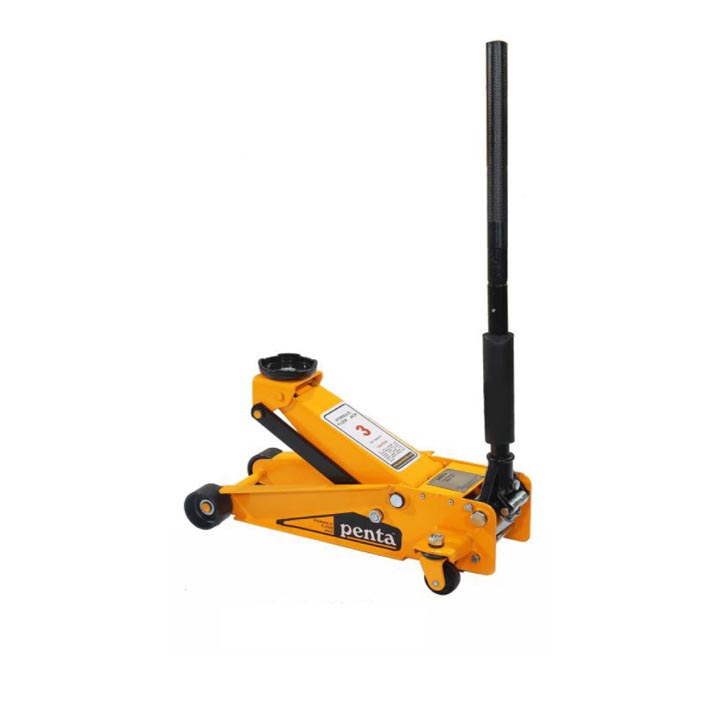
3.0 Ton Double Plunger
-
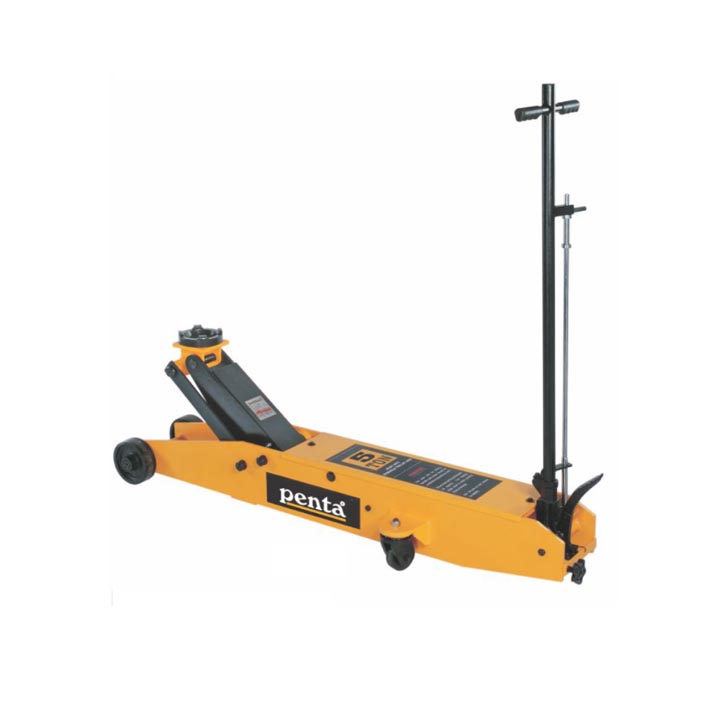
5.0 Ton
-
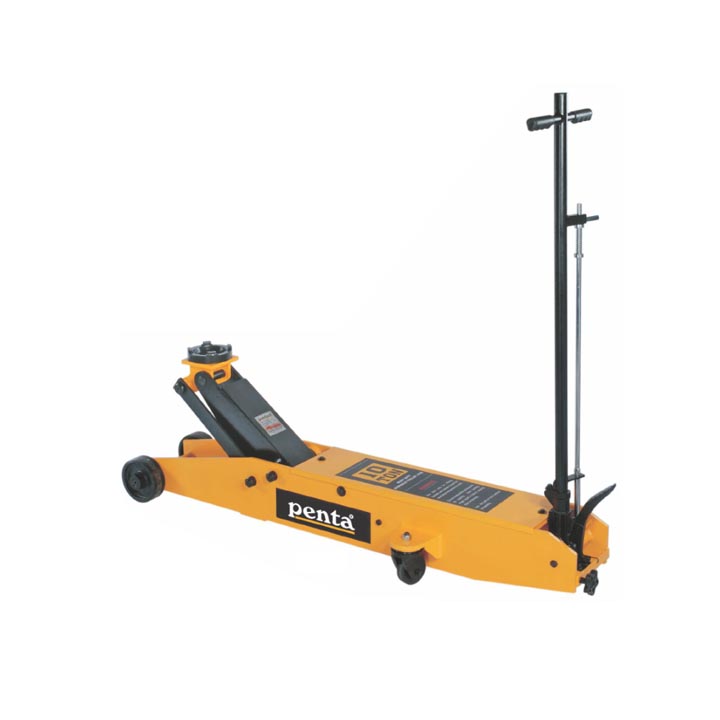
10.0 Ton
-
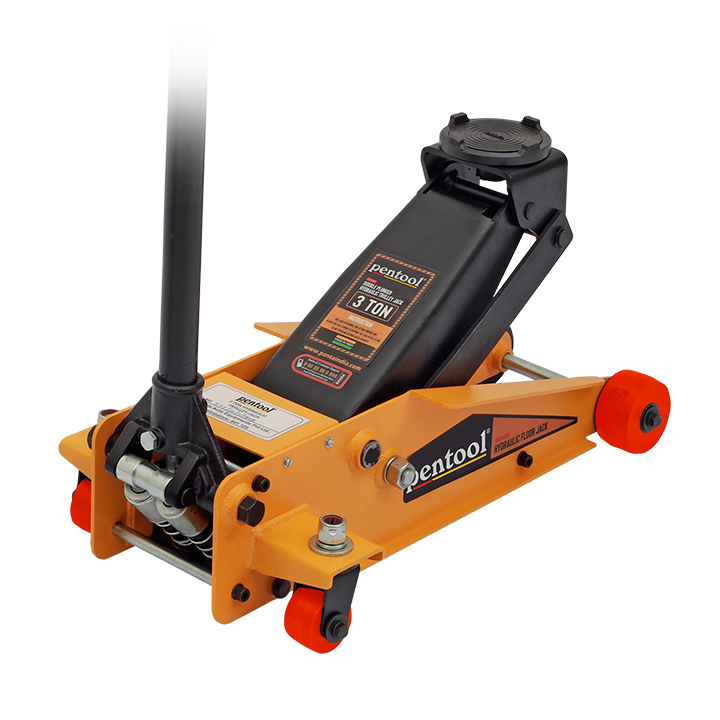
Castors for smooth mobility
-
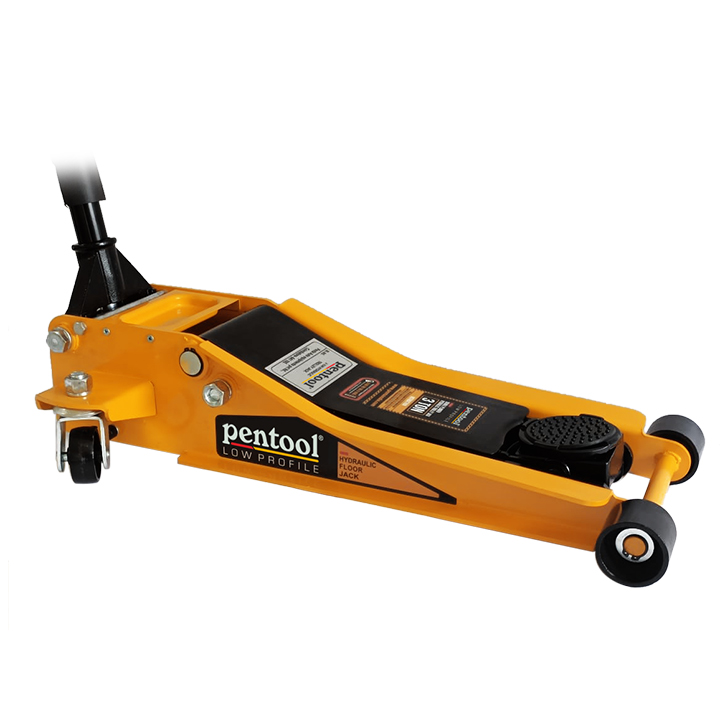
Low Profile
-

10.0 Ton
-
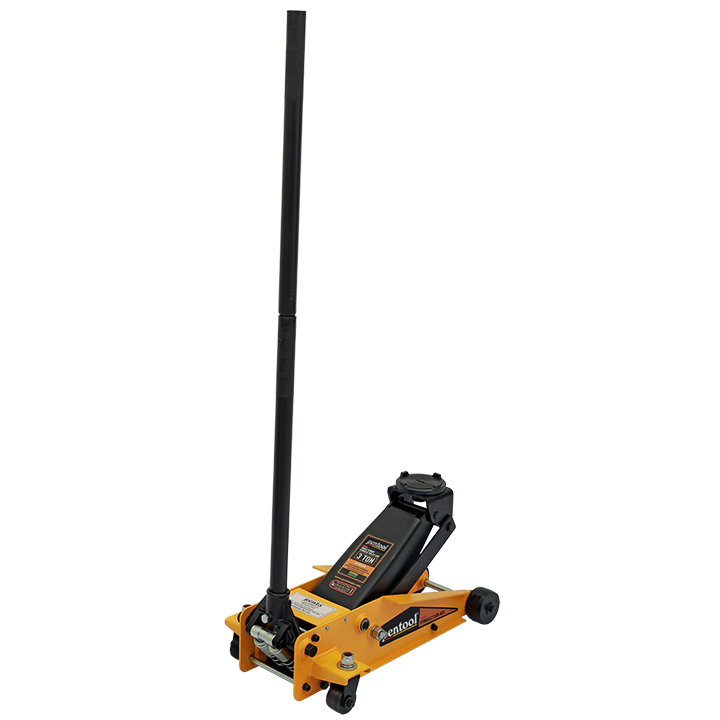
3.0 Ton
-

Wheel
-
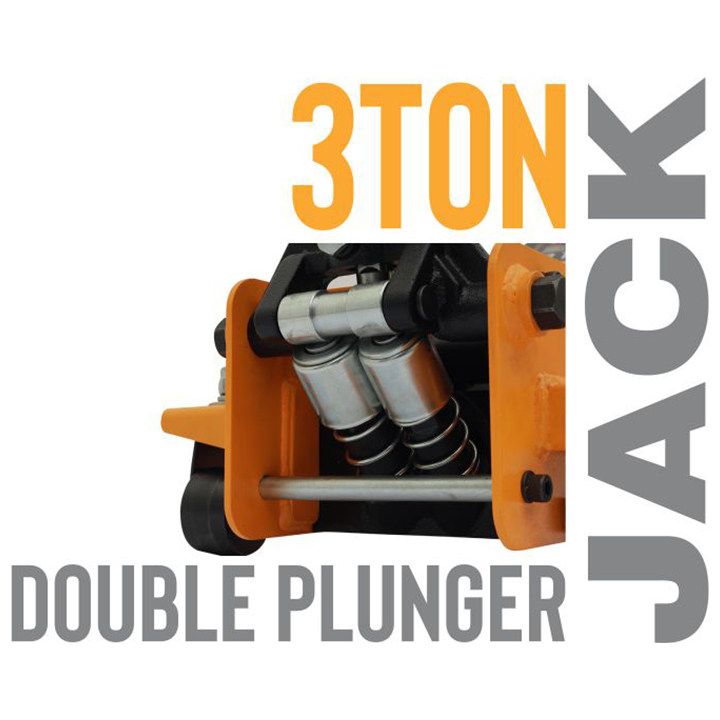
Double Plunger